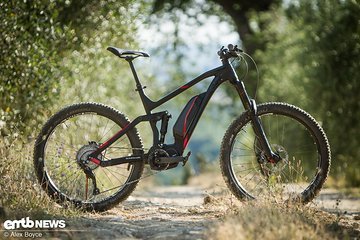@Rumms Its interesting because, I have used the bike daily on rides and also just sometimes taking it ride to town or something, I have a neighbour who does the same.
The drive train has done well, but the gears are not as smooth starting out with the Shimano shifting, So logic tells us that if they are not shifting smoothly and there is noise or friction then wear is taking place. My experience with EX1 has been that it is a quieter system shifting under power etc, this is less noise at the end which is less wear as the chain moves over the sprockets. It has a defined chain path. SRAM has perfect control over the chain.
A few years ago I interviewed the Engineer who made the EX1 cassette, he knows his stuff really well. Interesting guy at the launch of EX1. This was before EMTB news existed.
Loads with ebikes are between 100 and 300 percent more loads on cassettes. Shimanos cassettes are not ebike specific.
Less cross chaining with SRAM, which causes a lot of wear, 7mm less. Anyway.
Anyway watch this video pretty cool guy, super clever positive person, knows his stuff really well.
https://media.mtb-mag.com/en/pv/7660/
 Simplon Steamer im Test: Nach 4000 km und mehr glauben wir, dass das Steamer viele Fahrer glücklich machen wird, die gern auf langen Touren unterwegs sind. Zum Test:
Simplon Steamer im Test: Nach 4000 km und mehr glauben wir, dass das Steamer viele Fahrer glücklich machen wird, die gern auf langen Touren unterwegs sind. Zum Test: